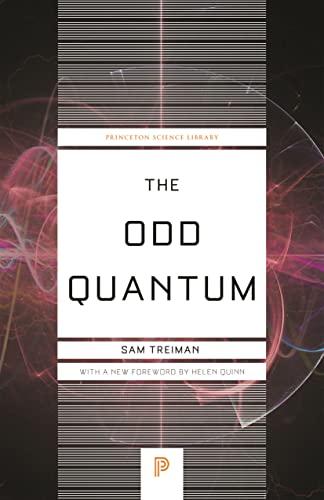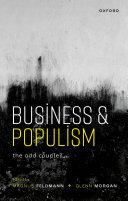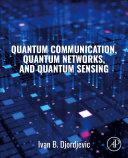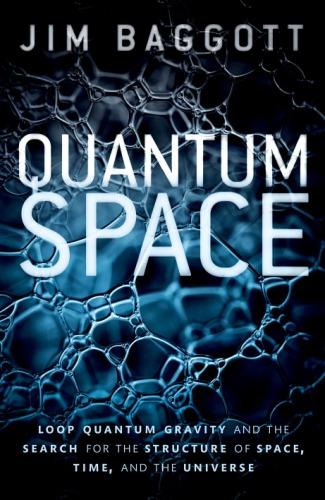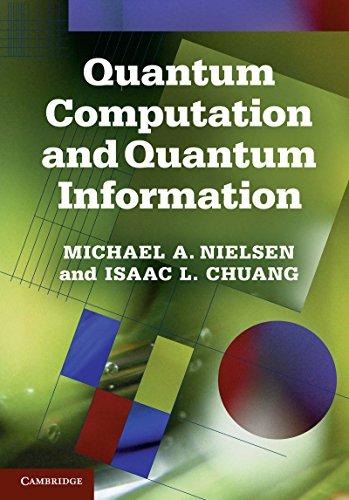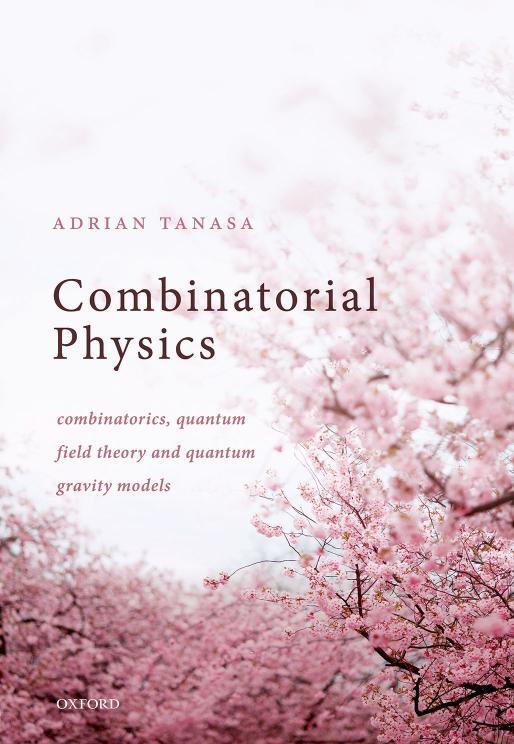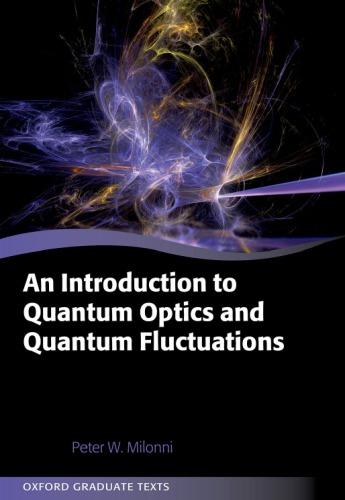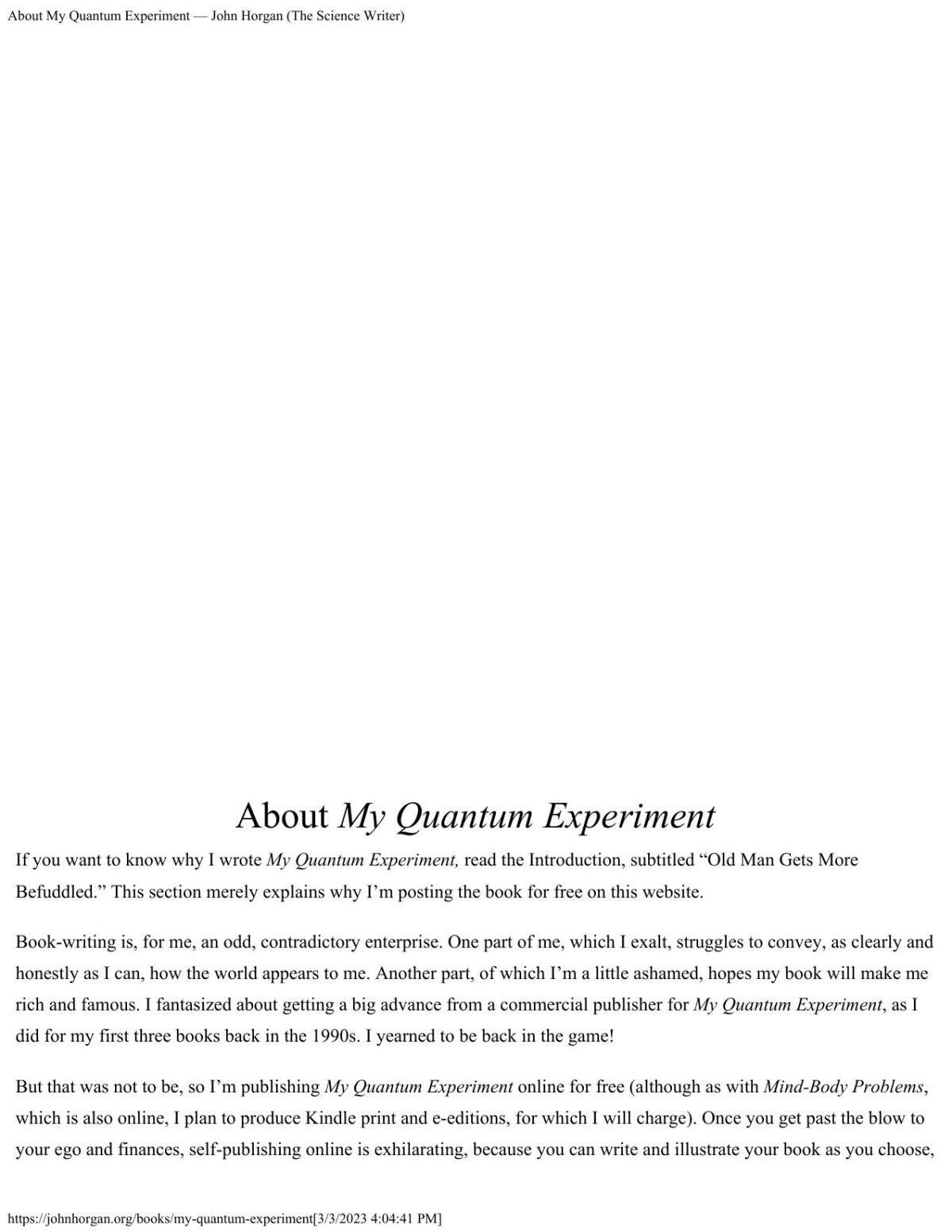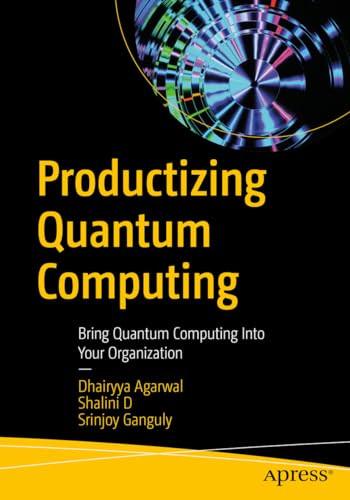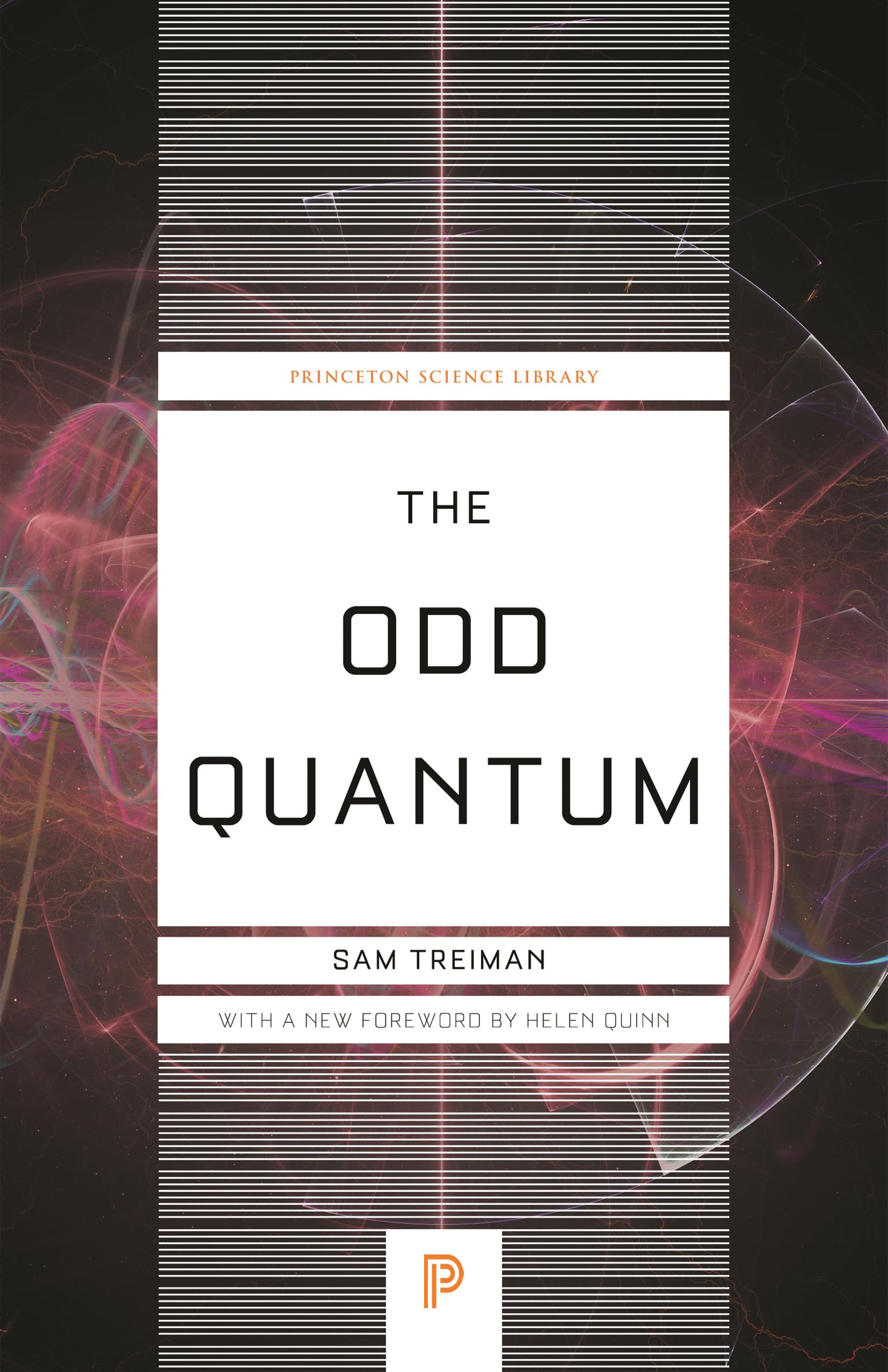PREFACE
Sam Treiman was, in my opinion, one of the great physicists of the era just prior to and leading into the development of the Standard Model that he describes in the final chapter of this book. The 1950s through the early ’70s saw the birth of the discipline we now call particle physics. Particle physics begins with the study of the substructure of protons and neutrons and other strongly interacting particles. It encompasses the strong, weak, and electromagnetic interactions of these particles and, as was eventually realized, of their constituents, the quarks. By the early ’60s, new technology, both accelerators and detectors, had produced a plethora of data on production and decays of over a hundred types of particles. Theory lagged behind, lacking any coherent general framework to interpret all this data. Sam began his career as a theoretical physicist in this period. He chose the right questions to ask; the methods he helped develop to reach at least partial answers have survived all the changes brought by new data and helped pave the road to the Standard Model that took shape in the early ’70s. His clear thinking and lucid exposition of ideas continued to inform the field throughout his career and made him also a highly respected teacher.
ThisbooksuggesteditselfafterIhadconductedaone-time, one-semesterfreshmanseminaratPrincetonUniversity.The seminarprogram,openonlytofirst-yearstudents,offersawide rangeofspecialtopics,manyofthemquiteambitious.Student participationisvoluntaryandselective;classsizesaresmall. Theseminarinquestionwasentitled“FromAtomstoQuarks, AlongtheQuantumTrail.”Ihadanticipatedandthestudents laterconfirmedthatthematerialwasratherdemanding.But theywereeager,open,andnumerate.Mosthadtakenearlier plungesofvariousdepthsintothepopularliteratureonrelativity,cosmology,theatom,nuclearandparticlephysics,and soon;andsomehadgottenwhiffsofthesesubjectsinhighschoolcourses.Theywantedtoknowmore.Itseemedlikely thatseveralofthestudentswouldlateron,inthesophomore year,electtomajorinoneoranotherofthenaturalsciencesor engineering.Otherswereheadedinotherdirections,inthesocialsciencesorhumanities.Whattheyhadincommonwasa curiosityaboutatomsandelectronsandneutrinosandquarks andquantummechanicsandrelativity,andallthat.
Sam was a deeply intelligent but practical and pragmatic man, honest and unpretentious about what he did not yet understand as well as about what he had figured out. These qualities shine through in the choices he made in writing this book. As he says in his preface, this work stands in a space between popular books about quantum mechanics and textbooks for those learning to work with quantum mechanics as chemists or physicists. Many popular books and articles about the subject seem to me to be written to impress and even to mystify the reader rather than to explain what quantum mechanics and quantum field theory actually do for us. Sam indeed addresses the peculiar, and indeed from an intuitive point of view, mysterious features of
Formanyofthetopicscoveredintheseminartherewereexcellentreadingstoberecommended,inbooksthatoffermainly descriptive,not-too-mathematicalaccountsofthedevelopment oftheatomichypothesisinthenineteenthcentury;thesubsequentdiscoveryofthenucleusanditscomponents;thelater floodofsubnuclearparticlesofvariouskinds;themodern quarkpicture;andsoon.However,inordertodigbeneath thequalitativepictureandprovideadeeperunderstanding, Iwantedtodevotesometimetotheunderlyingtheoretical framework,toanintroductiontoquantummechanicalconceptsandpractices.Thereisofcoursenoshortageofquantum mechanicstextbooksforundergraduatemajors,graduatestudents,andprofessionalsinvariousbranchesofscienceand
quantum mechanics, but he does so with his typical pragmatism. His intention is always to clarify what can be made clear. He also discusses, in as straightforward a way as I have seen anywhere, what is puzzling and diferent about this strange but efective description of physical states and processes. Along the way he demonstrates how the mathematics of the theory is used to describe and predict phenomena, choosing examples in the domains of atomic physics, where quantum physics originated, and particle physics, the domain in which he worked from its beginnings in the early ’50s until his death in 1999, the year this book was originally published.
The book is full of equations, up to and including those of quantum theory. These start with simple algebra but go on to include advanced diferential and integral algebraic and vector relationships. However, Sam’s point in including them is not that you must fully understand them. Indeed, if you have a familiarity with algebra and basic calculus, a little basic physics terminology, and a little patience for reading mathematics that you do not quite understand, he does a very good job of telling you what the equations are saying. He presents them because it is the equations, and not the words we use to describe them, that define quantum physics and allow us to calculate and predict the world of atomic and subatomic processes with extraordinary precision. The equations, and hence their interpretations, unlike those of pre-quantum physics (which physicists call classical physics), are probabilistic rather than deterministic. Sam wants you to understand why they are that way, and how well defined they are, even as many questions we might ask from a classical perspective remain unanswerable. From a quantum physics perspective, many such questions are not even meaningful, though from an intuitive perspective, they seem quite reasonable to ask.
Who wants to read such a book? I think the answer is: anyone who would like to understand the power of the incredible human achievement that is quantum physics. It is a mathematically well-defined theory that can describe and predict, with great exactitude, processes that occur on a scale too small for our
natural powers of observation. At this scale our intuition, which is after all based on our observed experience, fails us completely, and we must learn a new way of thinking about, to use Sam’s phrase, “what is going on here.”
Any technical book written in 1999 is out of date. Our understanding and experimental testing of the Standard Model has developed since this book was written. However, the ongoing success of that theory, along with Sam’s taste for a factual account, means that very little of what he says here is obsolete. The one exception: evidence for the production of Higgs bosons now exists. One further point that I would emphasize but that Sam does not mention is that this theory represents a total redefinition of the strong interaction, originally introduced as the interaction between protons and neutrons, that binds them to form atomic nuclei. That term now refers to the interactions between and among quarks and gluons. Protons and neutrons, and indeed any observable particles, are neutral particles as far as this interaction goes; they have no strong charge. The strong force that holds protons and neutrons together in the nucleus is due to the interactions between their constituent strongly charged particles, interactions that are large when the neutrons and protons are close to one another or even overlapping in space, a nuclear parallel to the electromagnetic forces between electrically neutral atoms that cause them to form molecules. But this is detail. Sam’s book stands as a clear exposition of the theoretical formalism of quantum physics, as it emerged in atomic physics in the early twentieth century and as it is applied to particle physics. It is well worth your time to read it today.
Helen Quinn
ThisbooksuggesteditselfafterIhadconductedaone-time, one-semesterfreshmanseminaratPrincetonUniversity.The seminarprogram,openonlytofirst-yearstudents,offersawide rangeofspecialtopics,manyofthemquiteambitious.Student participationisvoluntaryandselective;classsizesaresmall. Theseminarinquestionwasentitled“FromAtomstoQuarks, AlongtheQuantumTrail.”Ihadanticipatedandthestudents laterconfirmedthatthematerialwasratherdemanding.But theywereeager,open,andnumerate.Mosthadtakenearlier plungesofvariousdepthsintothepopularliteratureonrelativity,cosmology,theatom,nuclearandparticlephysics,and soon;andsomehadgottenwhiffsofthesesubjectsinhighschoolcourses.Theywantedtoknowmore.Itseemedlikely thatseveralofthestudentswouldlateron,inthesophomore year,electtomajorinoneoranotherofthenaturalsciencesor engineering.Otherswereheadedinotherdirections,inthesocialsciencesorhumanities.Whattheyhadincommonwasa curiosityaboutatomsandelectronsandneutrinosandquarks andquantummechanicsandrelativity,andallthat.
Formanyofthetopicscoveredintheseminartherewereexcellentreadingstoberecommended,inbooksthatoffermainly descriptive,not-too-mathematicalaccountsofthedevelopment oftheatomichypothesisinthenineteenthcentury;thesubsequentdiscoveryofthenucleusanditscomponents;thelater floodofsubnuclearparticlesofvariouskinds;themodern quarkpicture;andsoon.However,inordertodigbeneath thequalitativepictureandprovideadeeperunderstanding, Iwantedtodevotesometimetotheunderlyingtheoretical framework,toanintroductiontoquantummechanicalconceptsandpractices.Thereisofcoursenoshortageofquantum mechanicstextbooksforundergraduatemajors,graduatestudents,andprofessionalsinvariousbranchesofscienceand
technology.Intheotherdirection,therearemanywonderful booksinwhichtheexpositionofquantummechanicsrelies chieflyonqualitativedescriptions,analogies,metaphors,allusions,andthelike.Manyemployimaginativegraphics,include interestingbiographicalsketchesofthefounders,andemploy otherdevicestocapturethereader’sinterest.
WhatIcouldnotsoreadilyfindarebooksthatlieinbetween;treatments,thatis,thataresufficientlyprobingand mathematicaltoconveysomethingoftheactualsubstance, methods,andodditiesofquantummechanics,yetnotoverly technicalorprofessional.Thepresentslimvolumehasthese in-betweenobjectivesasitsgoal.Itisaimedatawideaudience ofthecurious—scientistsinnon-quantum-mechanicaldisciplinesaswellasnonscientists—atanyratethoseineitherclass whoarenotputoffbyequationsandtechnicalparticulars.It certainlygoesbeyondthosefreshman,buttheymighthave dippedintoit.Iwillbepleasedifthebookisreceivedasa seriesofrelated,shortessays.Awordaboutthemathematics: itisheretogiveexplicitformtoconceptsthatareoftenbest graspedthroughtheirconcreteexpressioninequationsandin theinterpretationsthatgowiththoseequations.Forexample, itisonethingtoassertvaguelythatquantummechanicsdeals withprobabilities,anothertoembodythisinadefinitemathematicalobject,awavefunctionwhoseevolutionintimeis governedbyadefiniteequationandwhoseinformationcontentisspelledoutintermsthataresometimes,ofnecessity, mathematical.Thereaderisnotmuchaskedtoactuallysolve anyequationsotherthaneasyones,butthereaderisinvited fromtimetotime—optionally—toconfirmasolutionthatis providedgratis.
Quantummechanicsisthemainthemeofthebook;butI couldnotresistthetemptationtoindulgeinbriefreviewsof classicalmechanicsandelectromagnetism,specialrelativitytheory,particlephysics,andothertopics.
IamgratefultoJoanTreimanforherencouragingwords,and forherforbearance.
THEODDQUANTUM
Introduction
InthephysicssectionoftheUniversityofChicagocatalogfor 1898–99,onereadsthefollowing:
WhileitisneversafetoaffirmthatthefutureofthePhysicalScienceshasnomarvelsinstoreevenmoreastonishing thanthoseofthepast,itseemsprobablethatmostofthe grandunderlyingprincipleshavebeenfirmlyestablished andthatfurtheradvancesaretobesoughtchieflyinthe rigorousapplicationoftheseprinciplestoallthephenomenawhichcomeunderournotice .Aneminentphysicist hasremarkedthatthefuturetruthsofPhysicalScienceare tobelookedforinthesixthplaceofdecimals.
ThiscatalogdescriptionwasalmostsurelywrittenbyAlbert A.Michelson,whowasthenheadofthephysicsdepartment andwhohadspokenverynearlythesamewordsinaconvocationaddressin1894.Theeminentgentlemanwhomhequotes maywellhavebeenLordKelvin.That1894talkprovedto bewelltimedforcontradiction.Inquicksuccession,beginning soonafterward,therecamethediscoveryofX-rays,radioactivity,theelectron,specialrelativity,andthebeginningsofquantummechanics—allofthiswithinadecadecenteredaroundthe turnofthecentury.Indeed,itwasMichelsonhimself,working togetherwithE.W.Morley,whoin1881hadcarriedoutthe crucialexperimentthatwaslaterrecognizedasafoundation stoneofspecialrelativity.BothMichelsonandKelvinreceived NobelPrizeawardsintheearlyyearsofthetwentiethcentury.
Inshort,allthegrandunderlyingprincipleshad not been firmlyestablishedbytheendofthenineteenthcentury.This cautionarytaleshouldnotbetoldwithanysenseofmockery.Thosedistinguishedscientists—andtherewereotherswho spokealongthesamelines—werelookingbackonacenturyof extraordinaryaccomplishment,anepochthathadcarriedthe physicalsciencestoastateofhighdevelopmentbythelate yearsofthecentury.Thewavelikecharacteroflighthadbeen demonstrated;thelawsofelectricityandmagnetismwerediscoveredandplacedtogetherinaunifiedframework;lightwas showntobethemanifestationofelectricandmagneticfieldoscillations;theatomichypothesishadincreasinglytakenholdas thecenturymovedon;thelawsofthermodynamicsweresuccessfullyformulatedand—foratomists—groundedinthedynamicsofmolecularmotion;andmore.Tobesure,although thegravitationalandelectromagneticforcelawsseemedwell understood,itremainedyettolearnwhetherotherkindsof forcescomeintoplayattheatomiclevel.Thatis,therewas workyettobedone,andnotjustatthesixthplaceofdecimals. ButaclocklikeNewtonianframeworkseemedassured.Inthis classical pictureofthephysicalworld,spaceandtimeareabsolute;andeverybitofponderablematterisateveryinstantat somedefiniteplace,movingwithsomedefinitevelocityalong somedefinitepath,allgovernedbytherelevantforcelawsaccordingtoNewton.
Thisclassicaloutlookinfactcontinuestoprovideanexcellentdescriptionofthephysicalworldunderconditionswhere velocitiesaresmallcomparedtothespeedoflightandrelevantdimensionslargecomparedtothesizeofatoms.Butour deeperconceptionsofspace-timehavebeentransformedbyrelativity;andofobjectivereality,byquantummechanics.Both runcountertoeverydayexperience,toourcommonsenseof theworld.Thisisespeciallysoforquantummechanics,which isthefocusofthepresentbook.
Overview
Beforeweembarkonourjourney,itmaybegoodinadvanceto sketchoutveryroughlysomeofthecontraststhatwillbeencounteredbetweentheclassicalandquantummodes.Forthe mostparthere,wewillbeconsideringasystemofpointparticlesmovingundertheinfluenceofinterparticleandperhapsexternalforcefieldscharacterizedbyapotentialenergyfunction.
Quantization
Classically,aparticlemightbeanywhereapriori;anditmight haveanymomentum momentum = mass × velocity .Correspondingly,itsangularmomentum—aquantitydefinedin termsofpositionandmomentum—mightapriorihaveany value.Sotootheparticle’senergy,kineticpluspotential,might haveanyvalueabovesomeminimumdeterminedbythepotential.Quantummechanically,however,angularmomentum cantakeononlycertaindiscretevalues.Itis quantized.Energy issometimesquantizedtoo,dependingondetailsoftheforce field.Itisthisclassicallyinexplicablediscretizationthatprovidestheadjective“quantum”inquantummechanics.
Probability
Amuchsharperandmoreprofoundcontrastwithclassicalmechanicshastodowiththeprobabilisticcharacterofquantum mechanics.Foraclassicalsystemofparticles,thestateofaffairs iscompletelyspecifiedatanyinstantbythepositionandmomentumvariablesofalltheparticles.Thedataonpositionsand momentaatanyinstantconstitutewhatwemaycallthe state ofthesystematthatinstant.Ittellsallthatcanbeknowndynamicallyaboutthesystem.Otherquantitiesofinterest,such asenergy,angularmomentum,andsoon,aredefinedinterms ofthepositionandmomentumvariables.Classicalmechanics isdeterministicinthesensethatfuturestatesofthesystemare
fullyanduniquelydeterminedifthestateisspecifiedatsome initialinstant.Thepresentdeterminesthefuture.Ofcourse,in practicalsituationstheinitialdatawillinevitablybecompromisedtosomegreaterorlesserextentbymeasurementuncertainties.Dependingonthesystemunderconsideration,thefuturemayormaynotbesensitivetothisuncertainty.Butthereis nolimit inprinciple totheaccuracythatcanbeimagined.There isnobarinprinciple,thatis,topreciseknowledgeofthepositionandmomentumofeachparticle,andthereforenobarto anticipatingfuturedevelopments.Whenwearingourclassical, commonsensehats,wedonotdoubtthateverybitofmatter isateveryinstantatsomedefiniteplace,movingwithsome definitemomentum,whetherornotwearetheretoobserve.
Thenotionofstatealsoarisesinquantummechanics.Here againthe state ofasystemconnotes allthatcanpossiblybeknown aboutthesystematanyinstant.Also,justasintheclassicalcase, thesystemdevelopsdeterministicallyinthatfuturestatesare fullydeterminedifthestateatsomeinitialinstantisgiven.In thissense,heretoothepresentdeterminesthefuture.Butthere isaveryprofounddifference.Aquantumstatedoesnotpreciselyspecifyparticlepositionsandmomenta,itonlyspecifies probabilities.Quantummechanics,thatis,isprobabilistic!For example,therearestatesforwhichtheprobabilitydistribution ofaparticle’spositionissharplylocalized,sothattheposition maybesaidtobealmostdefinite(attheinstantinquestion). Butthereareotherstatesforwhichtheprobabilitydistribution isbroad,sothatuponmeasurementtheparticlemightbefound almostanywhere.Andthereareinfinitelymanypossibilitiesin between.Sotooformomentum:forsomestatesthemomentum isalmostdefinite,forothersitisbroad,andthereareinfinitely manypossibilitiesinbetween.
Thisprobabilisticdescriptionobtainsnotbecausewehave imperfectinformationaboutthestateofthesystem,butisintrinsic.Moreover,therulesofprobabilitycompositionhave someverypeculiarfeatures.Wewill,ofcourse,gointothese thingsmorefullylateron,butitisimportantalreadyatthis earlystagetoemphasizeapointthatmaybeillustratedwith
thefollowingexample.Supposeonesetsupdetectorsatvariouslocationstodeterminethepositionofaparticleknown (somehow)tobeinacertainquantumstateatacertaininstant.Ifaparticulardetectorclicks,wewillhavelearnedthat theparticlewasinthevolumeoccupiedbythatdetectoratthe instantinquestion.Thatis,there will beadefinitefindingof location.Butiftheexperimentisrepeatedoverandover,alwayswiththeparticlearrangedtobeinexactlythesamestate, therewillbeaspreadofoutcomes.Ondifferentrunsdifferent detectorswillclick.Fullknowledgeofthequantumstatedoes notallowonetopredicttheoutcomeeventbyevent,onlythe probabilitydistribution.
TheUncertaintyPrinciple
Itisthecasethatanystatethathasaverylocalizedprobabilitydistributionforpositionmeasurementswillinevitablyhave abroaddistributionformomentummeasurements,andvice versa.Thereisalimittohowwellonecanjointlylocalizeboth positionandmomentum.Sotooforcertainotherpairsof observables (asmeasurablequantitiesarecalled).Thisisenshrined inthecelebratedHeisenberguncertaintyprinciple.Thatprincipleisnotsomeadd-ontoquantummechanics;itisatechnical consequencethatflowsfromthestructureofquantummechanics.Asmustofcoursebethecase,forthemacroscopicobjects ofeverydaylifetheHeisenberglimitisnotatallapractical restriction.Wecan,forexample,knowboththepositionand momentumofamovingjellybeanquiteaccuratelyenoughfor alleverydaypurposes.However,attheatomicleveltheuncertaintyprinciplecomesfullyintoplay.
IdenticalParticles
Inthemacroscopicworld,weneverencountertwoormoreobjectsthatarestrictlyidenticalineverypossiblerespect:mass, composition,shape,color,electriccharge,andsoon.Buteven
ifwedid—andwedoatthemicroscopiclevel,where,forexample,oneelectronisexactlythesameasanother—thiswould posenoconceptualproblemforclassicalscience.Onecanin principlekeepseparatetrackoftheobjectsby,sotospeak, pointing:object1istheonethat’satthisplace,object2is theotheroneoverthere,andsoon.Forquantummechanics thisapproachhasitslimits.Itisnotpossibletokeeptrack inthiswaysincelocationsareaprobabilisticmatter.Rather, thereisadistinctlyquantummechanicalapproachtodealing withidentity,onewithoutclassicalanalog.Theimplicationsare sometimesquiteunintuitive,andtheyareprofound.Whatis mostremarkableisthatalltheknownparticlesindeedcomein strictlyidenticalcopies—allelectronsarethesame,allprotons thesame,andsoon.Quantumfieldtheoryprovidestheonly naturalexplanationforthisstrikingfactofidentity.
Radioactivity
Thistermreferstoprocessesinwhichanatom spontaneously emitsoneormoreparticles:analphaparticle(heliumnucleus) inthecaseofoneclassofprocesses, α decay;anelectron(plus neutrinoaswenowknow)inanotherclass, β decay;anenergeticphotoninyetanotherclass, γ decay.In α and β radioactivity,theparentatomistransmutedintheprocessintoa daughteratomofadifferentchemicalspecies.Thereisnosuch transmutationin γ radioactivity.Onespeaksofanyofthese spontaneouseventsasa decay process.Inthecaseof α and β radioactivitytherereallyisdecay,thedisappearanceoftheparentatomanditsreplacementbyanatomofadifferentilk.In γ radioactivitytheatomdoesnotchangeitschemicalspecies membership;butaswewillseelater,itdoesundergoachange fromoneenergyleveltoanother.Inthatsense,heretoothere isdecay—oftheoccupancyoftheinitialenergylevel.
Notallatomicspeciesareradioactive,butmanyare.When radioactivitywasfirstdiscoveredaroundtheendofthenineteenthcentury,therewasgreatwonderandbafflement.Many questionswereraised,amongthemthequestion:wherein
theatom(if intheatom)dotheejectedparticlescomefrom? ThiswasclarifiedonlyafterRutherfordformulatedhisfamous modeloftheatom,picturingitasaswarmofelectronsorbiting aroundapositivelychargednucleusthatisverytinybutthat neverthelesscarriesmostofthemassoftheatom.Withthat,it soonbecameclearthatradioactivityisa nuclear phenomenon. Twootherquestionsamongmanyremained,andtheywere especiallypuzzling:(1)Theemittedparticlestypicallycarry alotofenergy.Wheredoesthatenergycomefrom?(2)How doesthenucleusdecidewhentodecay?Astothefirstofthese questions,theanswerwasalreadyavailableinEinstein’s1905 formula E = mc 2 ;butittookawhilebeforethissankinconceptuallyandbeforesufficientlyaccuratemassmeasurementsof parentanddaughternucleicouldbemadetotesttheconcept.
Thedeeperquestion(2)hadtoawaittheinterpretativeapparatusofquantummechanics.Ifyoutakeacollectionofidentical atomsofsomeradioactivespecies,youwillfindthattheatoms donotalldecayatsomeonecharacteristicinstantbut,rather, atvarioustimes—randomly.Iftheemissionsarebeingdetected byacounter,youmayhearindividualclicksasoneoranother atomdecidestodecay.Astimegoesbytherewillofcoursebe fewerandfewersurvivingparentatoms.Asitturnsout,the populationofsurvivorsdecreaseswithtimeinanessentially exponentialfashion,theaveragetime(or,briefly,the lifetime ) beingcharacteristicoftheparticularspeciesunderconsideration.Ontheclassicaloutlook,theproblemisthis.Theatoms ofthegivenspeciesarepresumedtobeidentical.Iftheyare governedbytheclockworkregularityofclassicalscience,why don’ttheyalldecayatthesameinstant,whatevermaybethe mechanismthatcausesradioactivedecay?
Thequantummechanicalansweristhattheworldisaprobabilisticplace.Anensembleofidenticalatomsstartinginidenticalconditionswilldistributetheirdecaysinaprobabilisticway overtime.Onecannotpredictwhatwillhappeneventbyevent, atombyatom.What can bededucedquitegenerallyistheexponentialcharacterofthedecaycurve.Butthemeanlifetime variesfromspeciestospeciesanddependssensitivelyonde-
tailsoftheunderlyingquantumdynamics.Itshouldbesaid herethatthetraditionalclassesofnuclearinstability, α, β,and γ ,areonlythreeamongamuchwiderrangeofdecayprocessesthatoccurinnature,includinghordesofreactionsinvolvingsubnuclearparticles:pimesondecay,muondecay,and soon.Theaveragelifetimesvaryoveranenormousrange,from roughly10 24 secondsforcertainsubnuclearparticlestobillions ofyearsandmoreforcertain α emitters(amongthese,U238 , whosehalf-lifehappenstobeaboutthesameastheageofthe earth).
Tunneling
Theprobabilisticstructureofquantummechanicsincorporates thepossibilitythataparticlecanbefoundinlocationsthatare absolutelyforbiddentoitclassically.Forexample,itcanhappen classicallythatthereisanenergybarrierthatseparatesoneregionofspacefromanother,sothatparticlesbelowsomeenergy thresholdcannotpenetratethebarrierandthuscannotmove fromoneregiontotheother(itmaytakemoreenergythan you’vegottoclimbthehillthatintervenesbetweenwhereyou areandwhereyouwanttogo).Quantummechanically,there isafiniteprobabilitythatsuchstrangethingscanhappen.Particlescanbefoundin,andcan tunnel through,classicallyforbiddenregions.
Antimatter
InattemptingtofindarelativisticgeneralizationofSchroedinger’squantumequationfortheelectron,P.A.M.Diracdevised atheorythatwasspectacularlysuccessfulinitsapplicationto thehydrogenatombutthatcarriedwithitsomeseemingly bizarrebaggage:amongotherthings,negativeenergystatesfor thefreeelectron.Whenproperlyreinterpretedthistransformed itselfintothepredictionofanewparticlehavingthesamemass astheelectronbutopposite(thatis,positive)charge.Theantielectron,or positron asonecallsit,wassoondiscoveredexperi-
mentally.Thesituationhassincebecomegeneralized.Relativisticquantumtheorypredictsthatparticleshavingelectriccharge mustcomeinpairswithoppositechargesbutidenticalmasses (andidenticallifetimesifunstable).Onememberofthepairis calledtheparticle,theothertheantiparticle.Whichiscalledby whichnameisamatterofhistoryandconvenience.Itturns outthatthereareotherkindsof“charge”inadditiontoelectric charge;forexample,so-calledbaryonnumbercharge.Thenecessityofparticle-antiparticlepairsobtainsforchargesofany kind.Thus,notonlyisthereanantiprotontotheproton,there isanantineutrontotheneutron.Theneutroniselectricallyneutralbutithasbaryonnumbercharge.Ontheotherhand,the photonand π 0 mesonamongothersdonothaveantiparticles; orasonesays,eachisitsownantiparticle.
Creationism,Destructionism
Ournotionofwhatitmeanstosaythatsomethingismade ofotherthingshasundergonearevolutionarytransformation inthiscentury.Whenyoutakeaclockapartyoufindgears, springs,levers,andsoon(ormaybeaquartzcrystalandbattery).Yousaytheclockismadeoftheseparts.Ifyoutakeapart thepartsinfinerandfinerdetail,youeventuallygettoatoms.If youtakeapartatoms,thereareelectronsandnucleiofvarious sorts.Goingon,youfindthatthenucleiaremadeofprotons andneutrons,andthenthatthesearemadeofquarksandgluons.Atthemicroscopiclevel,incidentally,takingapartmeans zappingthetargetwithaprojectileandlookingatthepieces thatemerge.Inearlieryearsthesurprisemayhavebeenthat deconstructiondidnotstopattheatom.Still,theancientnotion couldpersistthat,eventually,onecomestotheimmutableingredientsoftheworld,buildingblocksthatcanarrangeandrearrangethemselvesinvariouscombinationsbutthatarethemselveseternalandindestructible.
Thus,forexample,thenuclearreaction d + t → He + n can bepicturedasamererearrangementoftheneutron n and
proton p ingredientsofthedeuterium d andtritium t nuclei,theingredientsreemergingastheheliumnucleus(He)with oneneutronleftover.Theparticlereaction(i) π + p → + K mightbetakentoindicatethattheparticlesinvolvedhere— pion,proton,lambdaparticle,kaon—aremadeoftinierthings, perhapsquarks,thataresimilarlyrearrangingthemselves.But ifso,whatdoesonemakeofthereaction(ii) π + p → + K + π , inwhichanextrapionappearsontheright?Haven’tthequarks alreadybeenconceptually“usedup”toaccountforreaction(i), sothattherearenoingredientsleftovertoexplainreaction(ii)?
Andwhatdoesonemakeofthereaction p + p → p + p + π 0 ?
Noamountofrearrangementcanexplainhowitisthatthefinalsystemcontainsthesameobjectsastheinitialsystem plus somethingelse.Thereisnogettingaroundit,the π 0 issimply createdheredenovo;oratanyrateitsingredientsare.Inshort, downatthesubnuclearleveloneissimplyforcedtoacknowledgethatparticlescanbecreatedanddestroyed!
Thiscreationanddestructionofmatterisnotsomethingof everydayexperience.Itisaphenomenonthatcomesintoplay athigh-energyparticleaccelerators,inthecollisionsinducedby cosmicrays(high-energyparticlesthatrainontheearthfrom outerspace),inthestarsandwidercosmos,andincertainradioactivedecayprocesses.Thetransactionsunderlyingmostof science,technology,andeverydaylifehavemostlytodowith the“mere”motionsandrearrangementsofelectronsandnuclei.However,thereisoneverynotableexceptiontothis,even ineverydaylife.Itinvolvesathoroughlyfamiliarphenomenon interpretedinamodernlight,namely,light!Abeamoflightis nothingbutanassemblageofmasslessparticles, photons,movingat(whatelse?)thespeedoflight.Becausetheyaremassless, photonsareeasytocreate.Theyarecreatedwheneverthelight switchisturnedon.Regardedmicroscopically,whathappens isthattheyareproducedinelectronandatomiccollisionprocessestakingplaceinthelightsourcewhenthelatterisheated orotherwise“excited.”Photonsaredestroyedwhentheyimpingeonandareabsorbedbynontranslucentmaterialbodies (walls,books,theretinaoftheeye,etc.).
Photoncreationism-destructionismactuallyenteredtheworld whenEinsteinproposedhisparticle-likeinterpretationofelectromagneticradiation.Butthephotonconcepthadaprotracted birth,andthephotonisanyhowsuchaspecialparticle.Itis massless;itisthequantumofafieldwehaveknownclassically. Somehow,forphotons,theenormityofcreation-destructionas suchdidnotseemtoattractmuchphilosophicaldiscussionin theearlyyearsofthiscentury.Inanycase,forawhileonecould stillclingtotheideathat“real” ponderable particles,particles withnonzeromasssuchaselectrons,protons,andneutrons,are trulyimmutable.Butthereisnosuchimmutabilityforthemeither.Thisfirstbecameapparentwiththediscoveryoftheneutron andtherecognitionofitsroleinnuclearbetadecay.Thebasic betadecayreactionis
neutron → proton + electron + antineutrino
Theneutronisdestroyed,theproton,electron,andantineutrino created.Theantineutrino,whichishighlyunreactive,easilyescapesthenucleusandpassesthroughtheearth,thesolarsystem,thegalaxy,andintoouterspacewithoutleavingmuchof ascratch.Butthat’sanotherstory.
Wheredoesquantumtheoryfitin?Thequantumtheoryof theelectromagneticfieldgotitsstartintheheroicperiodof themid1920swhenthefoundationsofquantummechanics werebeingestablished.Quantumelectrodynamictheorywas designedfromthebeginningtoaccountforphotoncreation anddestruction.Thephotonemergesnaturallyinthetheoryas aquantumoftheelectromagneticfield.Sincethattimephysicistshavebrazenlyinventedotherfields,fieldsnotknownto usintheirclassicalguisebutthatareinventedforthepurpose ofbeingquantizedtoyieldotherparticlesaswell.So,forexample,thereisafieldthatmakesanddestroyselectrons.The oldertheoriesusedtohaveseparatefieldsaswellforprotons, neutrons,pions,andsoon.Wehavenowreachedamorebasic levelinvolving,amongotherentities,quarksandgluons.But thesetoocanbecreatedanddestroyed.
Beginnings
Initsmodernform,thestructureofquantumtheorywaslaid downinthemiddleofthe1920sinaconcentratedburstof creativityandtransformationthatisperhapswithoutparallel inthehistoryofscientificthought.Mainly,thecreatorswere veryyoung:WernerHeisenberg,PaulDirac,PascualJordan, andWolfgangPauliwereallintheirtwenties.TheeldersincludedErwinSchroedinger,whopublishedhisfamouswave equationatagethirty-nine,andMaxBorn,whoattheageof forty-threerecognizedandhelpedelaboratewhatHeisenberg hadwrought.Thenewoutlookbroughtwithitanunintuitive conceptofrealityalongwithanumberofattendantodditiesof varioussorts.Amongcontemporaryphysicists,somecouldnot readilyabsorbthenewdoctrine.Theygrumbledandfellout. Butalreadytheearliestapplicationstophenomenametwith convincingsuccess.Informeddissidents,AlbertEinsteinforemostamongthem,soonacceptedtheeffectivecorrectnessof quantummechanics.Theywerereducedtohopingthatclassicalrealityprevailsatsomedeeperlevelofnaturenotreadily accessibletoobservation.Thatdeeperlevel,ifthereisone,is stilltodaynowhereinsight.Asfarastheeyecansee,theprinciplesofquantummechanicsstandirreducibleandempirically unchallenged.Incaseswherethedifficultexperimentsandcorrespondingtheoreticalcalculationscanbecarriedoutwithhigh precision,quantitativeagreementisspectacular.Asoftenhappensinintellectualrevolutions,itwastheyoungergeneration thatcouldadapttothenewwaysofthinkingsomewhatmore easilythantheolderone.Succeedinggenerationshavehadan eveneasiertimeofit;theysimplygrewupwiththesubject. Nevertheless,theworldviewofquantummechanicsisodd; andtheoddestthingofallisthat,stilltoday,manydecadesafteritsfoundation,quantummechanicscontinuestoseemodd eventoscientificpractitionerswhoworkwiththesubjectevery dayandwhoknowandoperateconfidentlyinitsframework. Theirwondermentexpressesitselfnotsomuchattheoperationallevelasataphilosophicalone.Deepquestionspersistat
thatlevel.Wewillsurelynotresolvethemhere.Themoremodestaimhereissimplytoconveysomenotionofwhatquantum mechanicsis:itsprinciplesandsomeofitsconsequencesand oddities.
Manyquestionswithintheclassicalframeworkwerestillunresolvedtowardtheendofthenineteenthcentury,especially questionshavingtodowiththenatureofatoms—andforsome diehards,eventheveryexistenceofatoms.ButtheNewtonian frameworkwasnotindoubt.Itispossibletodayinhindsightto recognizehintsofquantumeffects,empiricaldeparturesfrom classicalexpectationthatshouldhavebeenpouncedonbyour nineteenthcenturyancestors.However,thisisonlyinhindsight.They did infactencounteranomaliesand did fretover them,butitwasfarfromclearatthetimethatthesecouldnot beresolvedwithinthestilldevelopingclassicalpicture.
Therearevaststretchesofcontemporarymacroscopicscience andengineeringthatstilldoverywelltodaywithoutanyreferenceatalltothequantummechanicalbasisofnature.Thisis sobecauseclassicalNewtonianbehavioremergesforthemost partasaverygoodapproximationtoquantummechanicsfor macroscopicsystems.Butthisassertionhastobeunderstoodin aqualifiedsense.Thequalificationcanbeillustratedbymeans ofanexample.Considertheflowofoilthroughasmoothcylindricalpipe,theflowbeingdrivenbyapressuredifferentialthat isestablishedbetweentheendsofthepipe.Ifthepressuredifferentialisnottoolargetheflowwillbesmooth;anditisthen aneasymatter,astandardtextbookprobleminclassicalfluid dynamics,tocomputetheflowrate,thevolumeofoiltransportedperunittime.Theanswerdependsonthelengthand diameterofthecylinderandonthepressuredifferential.These areparametersofexperimentalchoiceorcircumstance.Butthe answeralsodependsontheviscosityoftheoil.Ifthevalueof thatparameterissimplyacceptedasagivenfactofnature,as aquantitytobedeterminedempirically,thenthecomputation offlowratemaybesaidtoproceedalongpurelyclassicallines withoutreferencetoquantummechanics.However,tounderstandwhyoilhastheviscosityandotherpropertiesthatithas,
onehastomovedowntotheatomiclevel.Andtherethedifferencesbetweenquantumandclassicalscienceareasstriking ascanbe.
Anotherqualificationshouldbenoted.Thequantummechanicalrules,theconcreteequations,aredefiniteandwell established. Inprinciple onecancomputethestructureofoil moleculesandworkoutthewaythesemoleculesinteract amongthemselvesinbulkoilandthencegoontotheviscosityofoil.Butacompletelydetailedcalculationthattraverses thewholeroutefromtheindividualmoleculeanditsingredientsallthewayuptotheastronomicalnumber(about1024 )of moleculespresentinevenasmalldropofoilisutterlyunthinkable.Thesinglemoleculeisalreadycomplicatedenough.Thus, approximationsandaggregatetreatmentshavetobeadopted alongtheway,relyingonvariousrichandactivefieldsofscientificinquiry;forexample,thefieldofstatisticalmechanics.A pumperwhowantshighlyaccuratepredictionsofflowrateis welladvisedtoadopttheempiricalvalueofviscosity.Butthat samepumpermayalsosharewithothersacuriosityaboutwhy thingsarethewaytheyare.Moreover,thereisthepossibility oflearningenoughatthemicroscopicleveltodesignmolecular additivesthatcanaltertheviscosityinwanteddirections.
Aswithviscosity,sotooforotherkindsofinformationthat enterinparametricformintothevariousbranchesofclassical scienceandengineering:tensilestrengthofmaterials,thermal conductivity,electricalresistance,equationsofstate(therelationofpressuretodensityandtemperature)forvariousgases andliquids,opticalreflectioncoefficients,andsoon.Thedifferentfieldshavetheirindependentmethodologiesandconcepts. Nonesuffersanyshortageofengagingintellectualandpractical challengeswithinitsownframework.Butsofarasweknow, scienceisseamless.Atadeeperlevelthedifferentfieldsshare incommonthescienceofatoms,wherethequantumreigns. Deeperstillisthefantasticworldofthesubatomicparticles; andfartherout,theworldofthecosmos.
Quantummechanicsfirstbegantointrudeitselfonmankind’sattentionintheveryfirstyearofthetwentiethcen-
tury.Itdidnotbyanymeansspringupfullgrown.Thebeginningscanbesharplyplacedwithinaratheresotericcorner ofthescientificsceneofthosetimes;namely,thephysicsof blackbodyradiation.Theblackbodyquestionhastodowiththe frequencyspectrumofelectromagneticradiationthatfillsany volumeofspacesurroundedbymaterialwallsinthermalequilibrium.Thatseemsanawfullyspecializedtopic.However,it hadbeenestablisheddecadesearlierthroughelegantthermodynamicreasoningthatthespectrum,theradiationintensityas afunctionoffrequency,mustbeofafundamentalcharacter. Itcandependonlyonfrequencyandtemperature,notonthe shapeofthevesselnor,morestrikingly,onthekindsofmaterialsthatthewallsaremadeof.Deepissuesthereforeappeared tobeatstake.Experimentalmeasurementsovervariousparts ofthefrequencyspectrumwereactivelypursuedtowardthe endofthecentury.Thechallengeonthetheoreticalsidewasto predictthespectrum.ItwastheGermanphysicistMaxPlanck whosucceeded.Thatwasinthefallof1900.Wewilldescribe thescientificissuesmorefullylateron;butbriefly,whathappenedwasthis.Presentedwiththelatestexperimentalresults ontheblackbodyspectrum,Plancksatdownatonepointand innotmuchmorethananevening’sworksofarasweknow, hedevised—stumbledupon—anempiricalformulathatfitthe spectraldataremarkablywell.Thiswassomethingmorethan acaseofrawcurvefitting,however,sincehebroughttothe tasksomeguidingideasthathademergedfromearlierwork byhimselfandothers.Nevertheless,hisformulawasessentially empirical.Overthesucceedingmonthshesoughttodeduceit withintheframeworkoftheclassicaltheoryofhistimes.This requiredsomestatisticalmechanicsreasoning.Butthestatisticalmechanicsaspectsofclassicalsciencewerestillsomewhatin fluxandPlanckdidnotrecognize,oratanyratedidnotchoose tofollow,asimplepathtotheblackbodyspectrumthatwas availabletohim.Hadhetakenthatpath(noticedslightlyearlierbyLordRayleigh),hewouldhaveencounteredcatastrophic disagreementwiththedata.Instead,hefollowedamorecomplicatedroutethatwasmostlyclassicalinitsoutlines,butthen
